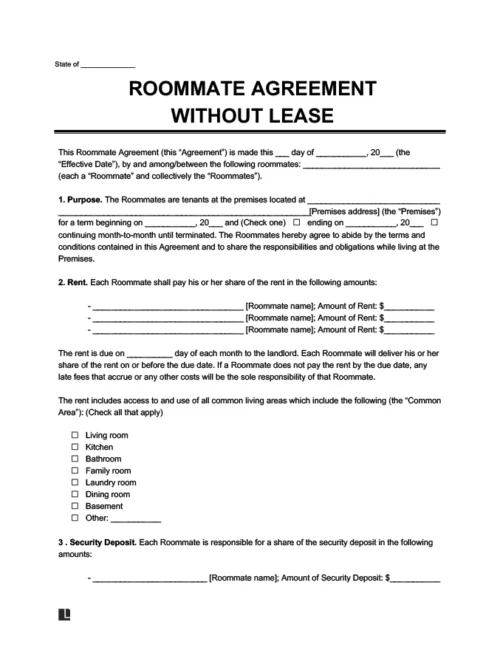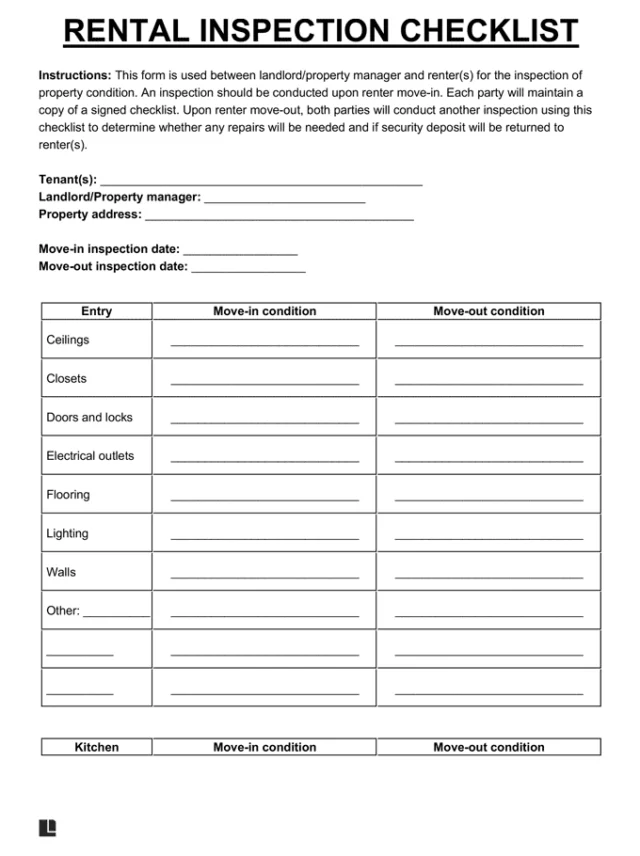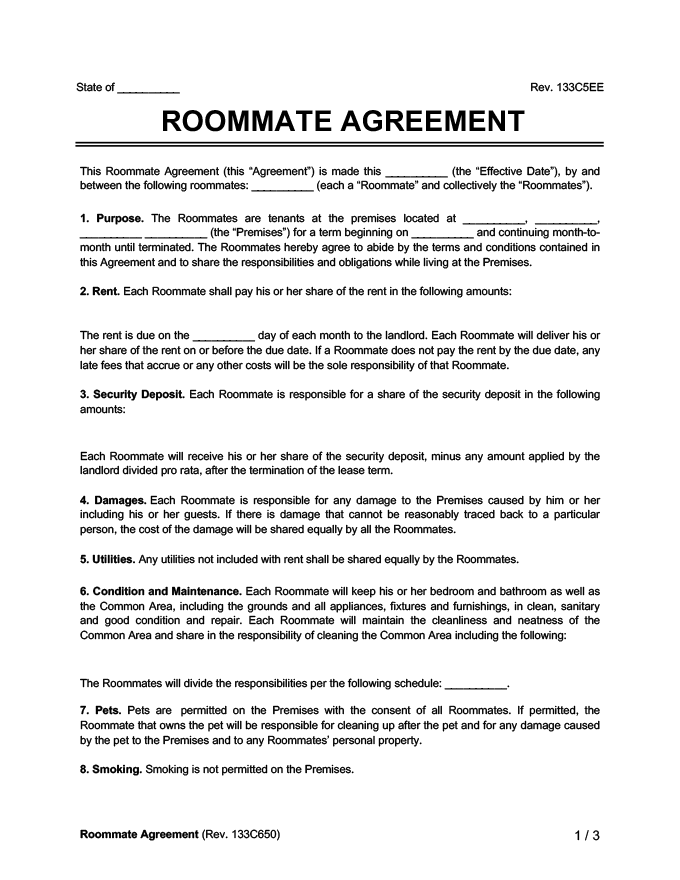What Is a Roommate Agreement?
A roommate agreement is a written contract between individuals in the same household. This agreement provides guidelines for rent, behaviors, and financial obligations. Generally, the roommate contract is only between the tenants living in the space and does not include the landlord. Creating your roommate or housemate agreement results in fewer disputes and sets expectations early.
Legal Templates offers a free roommate agreement template to settle your terms for living together. Our documents include customizable sections so everyone can communicate what works for them.
Why Should I Use a Roommate Agreement?
Making a roommate agreement may seem unnecessary, but setting expectations often proves useful. The most common reasons to use a roommate agreement include:
- Protection in legal disputes: If anyone fails to pay rent, the agreement proves their obligations in legal claims. While courts don’t usually handle disputes over chores or personal issues, the agreement may help with internal conflict resolution.
- Preventing personal tension: Roommates often have unspoken expectations and rules for living together. Talking about and recording your agreement reduces stress caused by different lifestyles.
- Dividing space and bills: A written agreement defines the division of spaces, utility bills, and property. You can refer to the agreement to understand their expectations and solve disputes.
How to Write a Roommate Agreement
Writing a roommate agreement requires everyone to negotiate, compromise, and record their terms. Create an effective agreement and a peaceful living arrangement with the following steps:
- Name all roommates: Put the full legal name and contact information of every roommate living on the property. Add additional roommates if others move in later.
- Provide the lease details: Outline the relevant lease agreement information, such as the start date, end date, and property address. Also, list which areas are considered common spaces.
- Divide rent payments: List the amount of rent that each roommate owes and the due date. Also, provide whether everyone has contributed to a security deposit and the amounts.
- Split utility bills: Select which utilities each roommate pays and how the bills are divided. Note whether any utilities are the sole responsibility of a specific tenant.
- Delegate responsibilities: Decide who will handle certain chores or if they will rotate. If desired, include a set chore schedule.
- Set guidelines for personal property: Communicate expectations for handling personal property. Determine whether items can be shared or if you would prefer others not borrow your items.
- Add dispute resolution: Include a section noting how roommates will handle disputes. Consider agreeing to use mediation first before pursuing further claims or intervention.
- Decide on permissions: Add permissions for pets, smoking, alcohol, firearms use of common areas such as the kitchen and living room, and guests. You can also customize the terms and add specific guidelines for each section.
- Outline quiet hours: Discuss whether you want to set quiet hours and determine which hours they will apply to.
- Customize additional terms: Mention other conditions, such as designating parking spaces, food expenses, storage, and shared appliances.
Roommate Agreement Sample
View our free roommate agreement sample documents, available in PDF & Word format. This customizable template makes it easy to set the terms that work for everyone in your household.
Additional Considerations for a Roommate Agreement
Roommates often have personal preferences about the rules they want included in the agreement. Consider discussing and adding terms for the following situations:
- Early move-out: Come up with a plan if one or more roommates want to move out before the end of the lease term. Determine whether roommates can sublet or reassign their space. State whether there is any financial penalty for leaving early.
- Rules for common spaces: Discuss guidelines for cleaning, decorating, and using common areas or shared appliances.
- House temperature: You can also add terms for each season’s temperature regulations. This ensures everyone remains comfortable and reduces electricity consumption.
- Adding new amendments: Set up a process for changing, adding, or removing terms from your agreement. Making early provisions to allow amendments ensures you can adjust the rules as needed.










